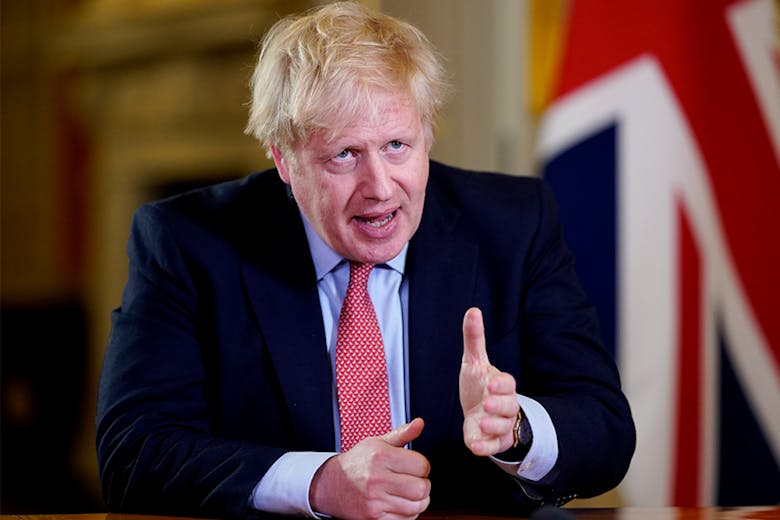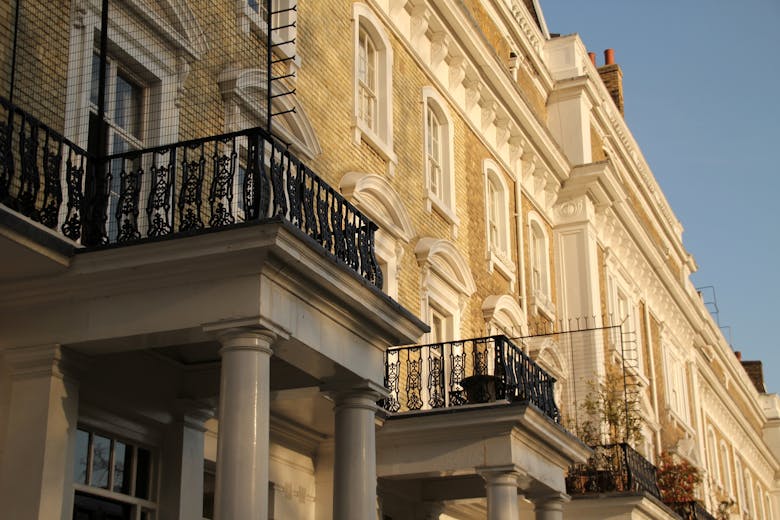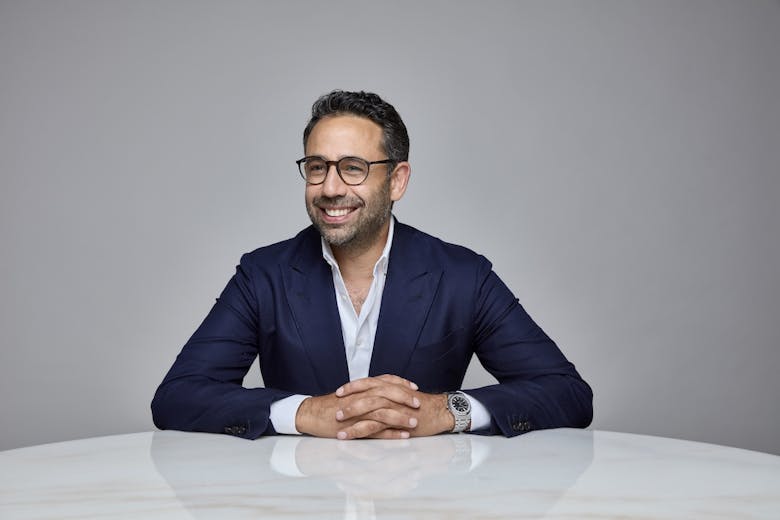As the COP26 summit in Glasgow draws to a close, world leaders and policy-makers turned their attentions to the built environment yesterday.
Our homes are one of the biggest culprits of global carbon emissions, and there’s been a marked escalation in interest and urgency in this arena: Downing Street recently published its Heat & Buildings strategy, while the UK Green Building Council has published a rather more ambitious Net Zero Whole Life Carbon Roadmap for the UK Built Environment.

A new survey by the Royal Institute of Chartered Surveyors found, however, that today’s home-buyers are not really factoring energy efficiency into their buying decisions – although there’s a consensus that this will change within three years…
The prime property sector has a duty – and capability – to lead this movement. Larger homes not only pollute more than smaller homes, but owners at this level are more likely to have the budget to be early-adopters of new technologies that can make a real difference. Trail-blazing retrofits, visionary design and aspirational demand for sustainability can be proven here, allowing them to then make headway in the mass market.
Here, four prime resi industry insiders – a buying agent, two estate agents and a luxury property developer – share their thoughts on COP26, sustainability in the property sector, and how business leaders can make a real difference…
Clients now seem genuinely concerned about the environment
![]() Mark Lawson, partner at buying agency The Buying Solution
Mark Lawson, partner at buying agency The Buying Solution
“There has been a big shift in the past 18 months to two years especially – at first a lot of clients were mostly asking for cost reasons, actively looking for environmentally friendly ways to run and heat houses more efficiently. Now, and I think this has been heightened by flooding news, and other devastating impacts of climate change, including concerns over the impact on health and wellbeing, clients now seem genuinely concerned about the environment, asking lots of questions and wanting houses that are neutral in as many ways as possible. We are now finding ourselves advising on ground source and air source heating, how they go about harvesting rainwater, talk about good insulated etc.
“I have one client who wants to build a self sufficient house. This includes having a large walled garden so they too can be as self sufficient as possible, living from their own land.
“Meanwhile, last week I met the first commercial client, currently with a large carbon footprint, wanting us to help them buy land to help them off set and make their current operations as carbon neutral as possible. This is likely to be increasingly common. Land can be farmed to sequester as much carbon as possible. Planting trees is probably the best use of land for this but it takes 10+ years before trees are really useful. Peatland is also particularly good at restoring the planet, so in Scotland in particular there are huge efforts underway to restore the bog lands. Where peatlands have been drained and left to dry out it can have some terrible consequences for the environment. The Scottish Government is investing roughly £50million into improving the country’s spongey blanket bogs. There are recommendations for peatland as an alternative use for grouse moors in a further bid to help.”
We need to adopt a radical mindset, and fast
![]() Chris Dietz, Executive Vice President, Global Operations at Leading Real Estate Companies Of The World
Chris Dietz, Executive Vice President, Global Operations at Leading Real Estate Companies Of The World
“There have been a number of encouraging commitments from global leaders at COP26 and the onus is now on international bodies, nation state governments and the business industry to take meaningful steps to ensure words turn into actions. Global climate summits have too often been defined by political point scoring but it feels like there is something different about this year, perhaps reflective of the urgency surrounding the climate crisis and a wider acceptance of that on the part of politicians and business leaders.
“That sentiment extends to the real estate industry too, where the responsibility is particularly acute given that buildings account for almost 40% of global greenhouse emissions. There have been a number of conversations around the requirement for sustainable solutions in real estate and the defining role they will play in the wider environmental agenda, with the likes of net zero timelines, ESG, green financing, retrofitting and proptech some of the core issues being discussed. Exemplary sustainable projects from across the world have also been showcased and I think it’s important to recognise the progress we are making in that respect.
“There seems to be a general acceptance that we need to adopt a radical mindset, and fast.”
We need to do more and we won’t stop thinking of new and better ways to create exceptional spaces
![]() Mark O’Callaghan, founder of design and development firm Echlin
Mark O’Callaghan, founder of design and development firm Echlin
“‘Our house is on fire’ – such powerful words from Greta Thunberg two years ago now. This month COP 26 in Glasgow has been shining a light on such an important topic and see how the design industry responds. Hats off to Stride Teglown for making a noise with the submerged Stride Down house in the River Avon, Bath to represent the tipping point of climate change. The sculpture of the person on the roof hanging on for dear life shows our planets fragility.
“How our homes affect our personal health and wellbeing was something at the forefront of our minds when we started Echlin, together with breathing life back into homes in desperate need of renovation or restoration. But over the years we have gained a better understanding of how one home impacts more than just its inhabitants, it affects everyone in some way. Whether it’s flood risk, biodiversity, construction methods, logistics, supply chains, materiality, tax or even the chemicals in the scented candle on the coffee table; every decision has an impact.
“We have always seen our role, at a nexus point between the development, architecture, interiors, and luxury industries as an opportunity to be innovative and find new ways of putting together high-end homes. Rather than bling we’ve always focused on light, use of space, natural materials and greenery as ways to create what felt like luxury to us – a sense of peace. Whether it’s adding living walls to our projects that increased biodiversity, adding skylights that reduce the need for artificial lighting, courtyards that increase air flow reducing the need for mechanical ventilation, or sourcing local to reduce the carbon footprint, we want our homes to keep us and our environment healthy.
“We have used recycled plastic to create furniture within our projects in prime central London, and most of our designs have glazed courtyard ventilation and living walls. We try to source ‘local’ working with local craftspeople and raw natural materials.
“We keep our designs simple, clean, our approach to luxury is more textured and natural and this in turn reduces materials, waste and carbon. But we need to do more and we won’t stop thinking of new and better ways to create exceptional spaces.”



Business leaders can’t simply sit back and watch the climate crisis destroy our Earth
![]() Guy Gittins, CEO of London estate agency Chestertons
Guy Gittins, CEO of London estate agency Chestertons
“Business leaders can’t simply sit back and watch the climate crisis destroy our Earth. We have a shared responsibility to do everything we can to protect our environment. We took the decision in 2019 to work towards becoming the greenest estate agent in the UK, and started on a journey to become carbon neutral.
“We soon identified that the only way of realistically doing this was to completely overhaul our car fleet. Our first BMW i3s hit the road the same year, and then last year, along with many other green initiatives across the business (such as using all renewable energy for each office) we achieved our goal and became the first UK agent to be certified as carbon neutral.
“With over 70 electric cars now on the roads, we are not only doing our part to improve London’s air quality, but we have also seen some cost savings as a result of our decision, which have been put towards supporting government-backed Carbon offset programs so we could achieve our carbon neutral status. It is a project that our staff have all been incredibly excited about and proud to be a part of and it has certainly helped raise awareness of environmental issues across the business and within the communities we serve.”

Further Reading
- Five Steps to Carbon Neutral Property: Green Building roadmap calls for a ‘transformative shift in industry practices’ Nov 2021
- Most home-buyers ‘don’t factor in energy efficiency in their purchase’ – yet Nov 2021
- Heat & Buildings Strategy: The good, bad & ugly of the UK’s plan to replace gas boilers Oct 2021
- Five numbers that lay bare the mammoth effort needed to insulate Britain’s homes Sept 2021
- How we measure energy efficiency in homes isn’t working July 2021
- Beyond the eco-conscious affluent: Is there a green premium for new homes? May 2021
- 67-acre King’s Cross Estate achieves carbon neutrality Nov 2021
- ‘Why wait?’ – Grosvenor fast-tracks net-zero sustainability strategy Oct 2021
- Bankside Yards to be UK’s first 100% electric major mixed-use development July 2021
In this article
Main image: Located in a seemingly perilous location just above the turbulent weir the house’s vulnerability and that of the figure on top represents the dangerous position we have put ourselves in today with climate change. The piece highlights the need for immediate action to avoid devastating consequences.
 Mark Lawson, partner at buying agency The Buying Solution
Mark Lawson, partner at buying agency The Buying Solution Chris Dietz, Executive Vice President, Global Operations at Leading Real Estate Companies Of The World
Chris Dietz, Executive Vice President, Global Operations at Leading Real Estate Companies Of The World Mark O’Callaghan, founder of design and development firm Echlin
Mark O’Callaghan, founder of design and development firm Echlin Guy Gittins, CEO of London estate agency Chestertons
Guy Gittins, CEO of London estate agency Chestertons 
















